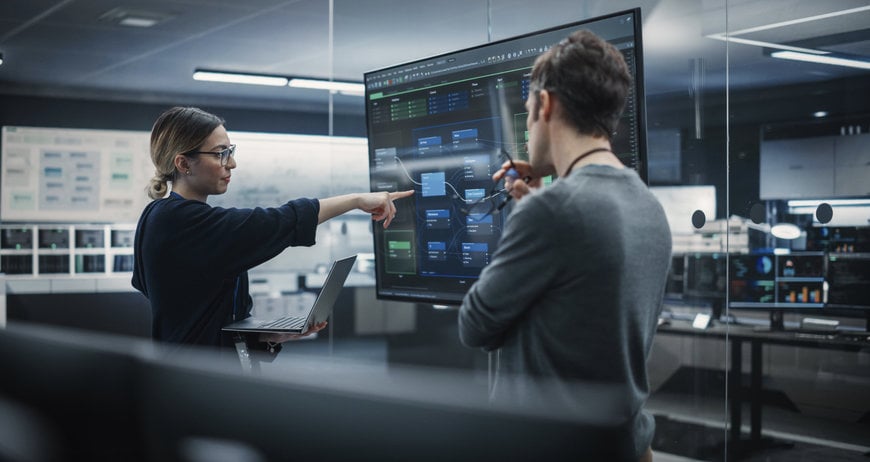www.industryemea.com
23
'24
Written on Modified on
INTEGRATING DIGITAL AND DATA WITH TRADITIONAL ENGINEERING TO UNLOCK NEW EFFICIENCIES
KBR's suite of cutting-edge, disruptive digital solutions and technologies shorten the distance from data to decision, help reduce risk, and drive speed to market.
www.kbr.com

True to Moore’s law of doubling microchip capacity every two years, more powerful, cost-effective and less cumbersome technology keeps coming – think cloud computing, SaaS and affordable AI. The potential this offers the energy industry is huge and largely untapped. The world needs cleaner energy solutions quickly. A global squeeze on available engineers and the need for speed and efficiency means turning to new technologies to help.
The solution is digital engineering. This involves deploying individuals focused on business outcomes, who work at the boundary of human and digital tasks. At KBR, we are growing our digital engineering capabilities to respond to this opportunity.
Cloning Data
To drive affordability, and lower risk, digital engineering is leveraging the ability to clone engineering design from one project to another. This isn’t as simple as copying and pasting. There is still a critical need for design and engineering assurance, requiring significant technical expertise to understand the data and make accurate judgements. The emergence of Model-Based Systems Engineering (MBSE) is enabling our engineers to identify when cloning can be used. In a recent project to build a gas processing plant, cloning data from a similar project eliminated the pre-FEED stage completely and reduced the FEED stage to cut the total project duration by months.
Cloud Enabled Global Collaboration
Digital technology is fundamentally changing the way we collaborate. Project teams are often global and fostering open collaboration is essential. The cloud-based technology involved is quite simple, but sharing work in real time requires emergent digital engineering skills. In the pre-FEED stage of one FLNG project, KBR created a cloud-based data room for teams in London, Perth and Chennai. This underpinned a shared understanding and openness that fostered profitable decision-making from an engineering point of view, cutting the duration of the pre-FEED stage by over 50%.
Digital Twinning
In later phases, shared data can help build a digital twin, which is a natural environment for today’s digital engineers. For bp and their partners in Azerbaijan, KBR worked with software partner Aveva, to develop a digital twin of the Azeri Central East platform. Our digital engineers organized huge amounts of data from many sources, ensuring that as the data matured, the project progressed ahead of planned milestones. Digital engineering enabled the digital twin to evolve, offering value in the operational phase. It supported critical start-up activity streamlining the project. A small team continues maintain the digital twin enhancing maintenance, safety and productivity.
Conclusions
These examples were impossible five years ago, and Moore’s law tells us that technology will keep improving. KBR is now part of an ecosystem that includes hyper-scaling AI companies, bringing technology to bear in ways that project owners can understand and benefit from.
The skill set of a digital engineer in supporting the change journey of an asset, and a client, is just as critical as technological mastery. When both are achieved, rapid acceleration and risk reduction result.
www.kbr.com

